There’s a frost on the ground and the trees are still bare, but nature’s hinting that spring isn’t too far away. Fall in love with nature all over again, with our guide to unmissable wildlife events.
Long-tailed tit (Aegithalos caudatus)
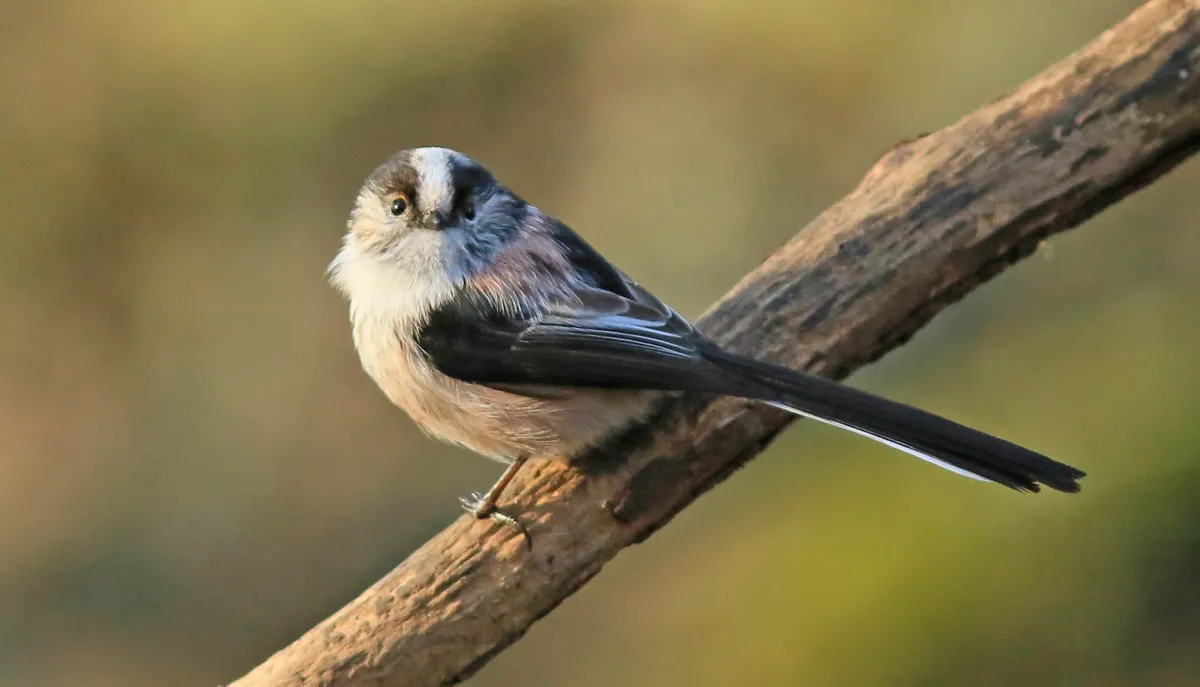
One of the first birds you’re likely to see gathering nesting material each year is the long-tailed tit. The female will usually be on a clutch of between eight to 12 eggs by March, or early April further north, but before that the extraordinary nest has to be made. Construction takes up to three weeks, longer than in most other small songbirds, and the male and female work as a team.
They select a site low down in a thorny bush or hedge or hidden among the tangled stems of a rose or some other climbing plant, then start to weave an oval-shaped ball from moss, adding a small entrance near the top. They cover the structure in crusty grey lichen for camouflage, line it with thousands of tiny white down feathers – as many as 1,500 – and bind it all together with spider silk. A masterpiece!
But the most remarkable thing about this nest is that it is expandable, so it bulges to accommodate the growing brood.
Sea urchin (Echinoidea)
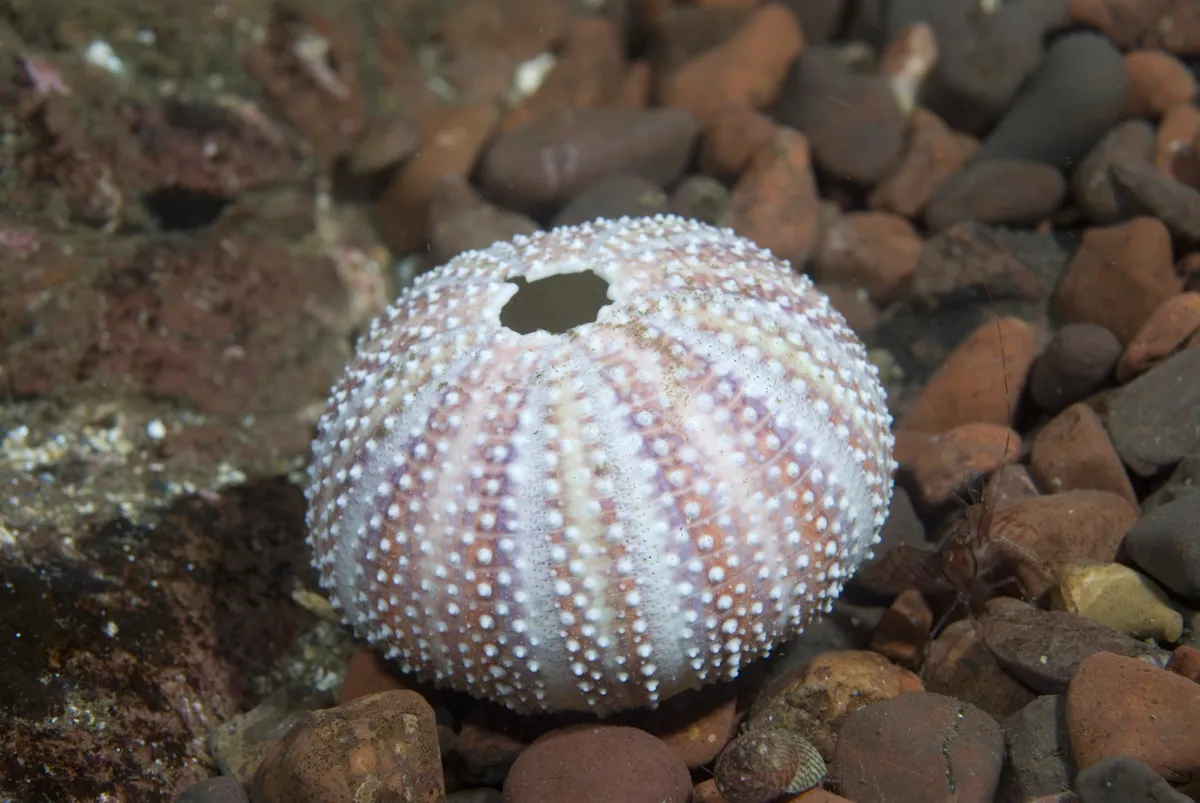
Beachcombing can be a fruitful and mindful pastime at any time of year, but it’s in winter that the sea gives up many of its treasures. Among them are the skeletal remains of ancient invertebrates that have been on Earth for 540 million years – sea urchins. Several species, including green and common (edible) sea urchins, occur on British coasts. Their shell-like cases, called tests, are made mainly of calcium, arranged in plates to form a squashed sphere reminiscent of a satsuma.
In life, sea urchins are covered in spines like marine hedgehogs – Echinus, the genus to which they belong, comes from the Greek word for hedgehog – but these are lost when they die. Little white bumps cover the tests that wash up on shores, showing where the spines were attached. The soft organs have long since rotted away, leaving an empty container. Well, almost empty. If you pick a test up, it rattles, as the urchin’s hard teeth and jaws, used for grazing algae, are still trapped inside.
Learn more about beachcombing and coastal wildlife:
Pine marten (Martes martes)
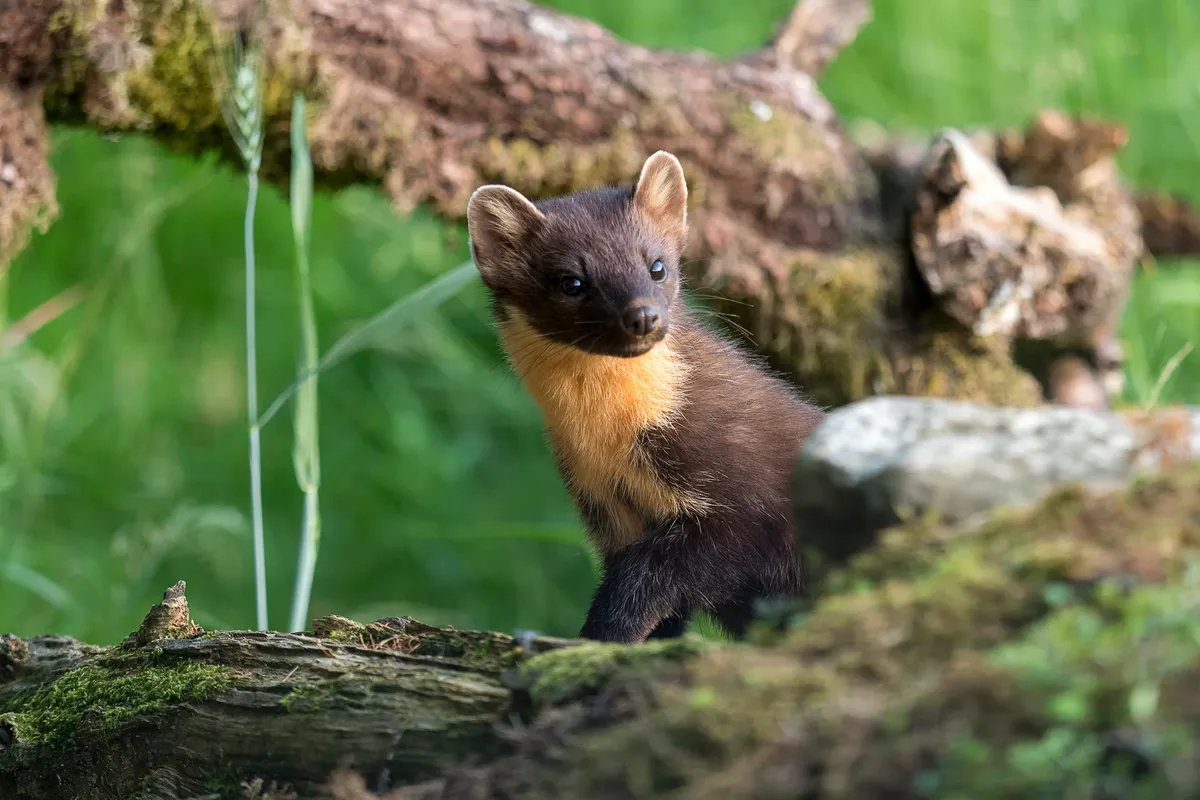
British winters are no great challenge for pine martens, which are adapted for much colder continental conditions in the boreal forests of the far north. Their ‘flexitarian’ diet means they can find plenty of food year round. But they do spend much longer in their dens. One study in Poland found they were active just three hours a day in winter, compared to 12 hours in summer.
White-tailed eagle (Haliaeetus albicilla)
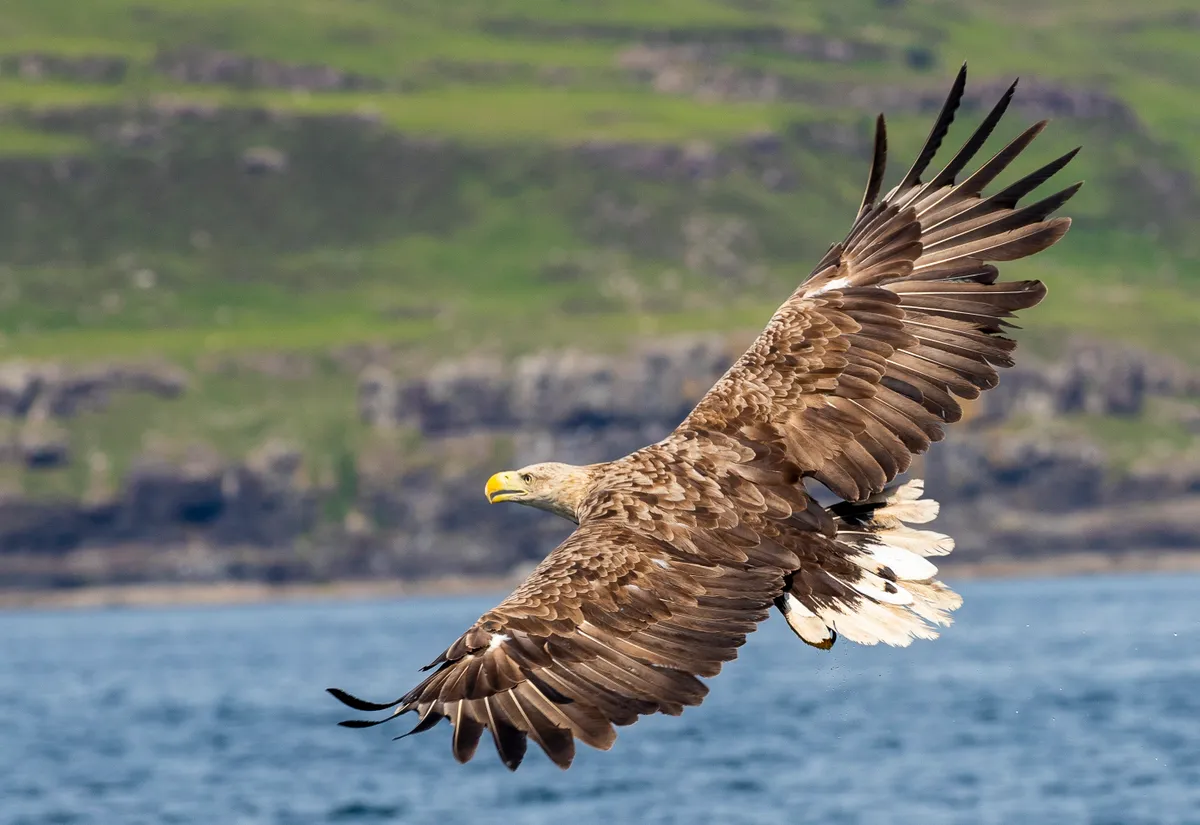
They may be our largest raptors, with a vast ‘barn door’ silhouette in the air, but white-tailed eagles are not above scavenging, especially in winter. Young birds couldn’t survive without carrion and often find it by following groups of crows, buzzards or red kites. Sadly, feeding from bird carcasses puts them at risk of avian influenza (bird flu) and several of these mighty eagles have succumbed.
Winter craneflies (Trichoceridae)

You might think no insects are around in February, but you’d be wrong. Spend any time near a compost heap or damp woodland with plenty of soggy leaves and you may notice swarms of little flies dancing jerkily up and down in the air, as if on invisible strings. They’re easiest to see against the light, when their long legs and delicate wings turn gold in the weak winter sunshine. These are winter gnats, also called winter craneflies. The larvae feed on decaying matter, hence the association with compost and mouldering vegetation.
As with many fly swarms, the midair dance parties are to do with breeding (the same is true of mayflies, which aren’t true flies). The dancers are usually males, competing for mates, and while their puppet-on-a-string movements appear graceful, the swarm can be fairly frenetic. Take some time this winter to appreciate their brief moment in the spotlight.
Grey squirrel (Sciurus carolinensis)
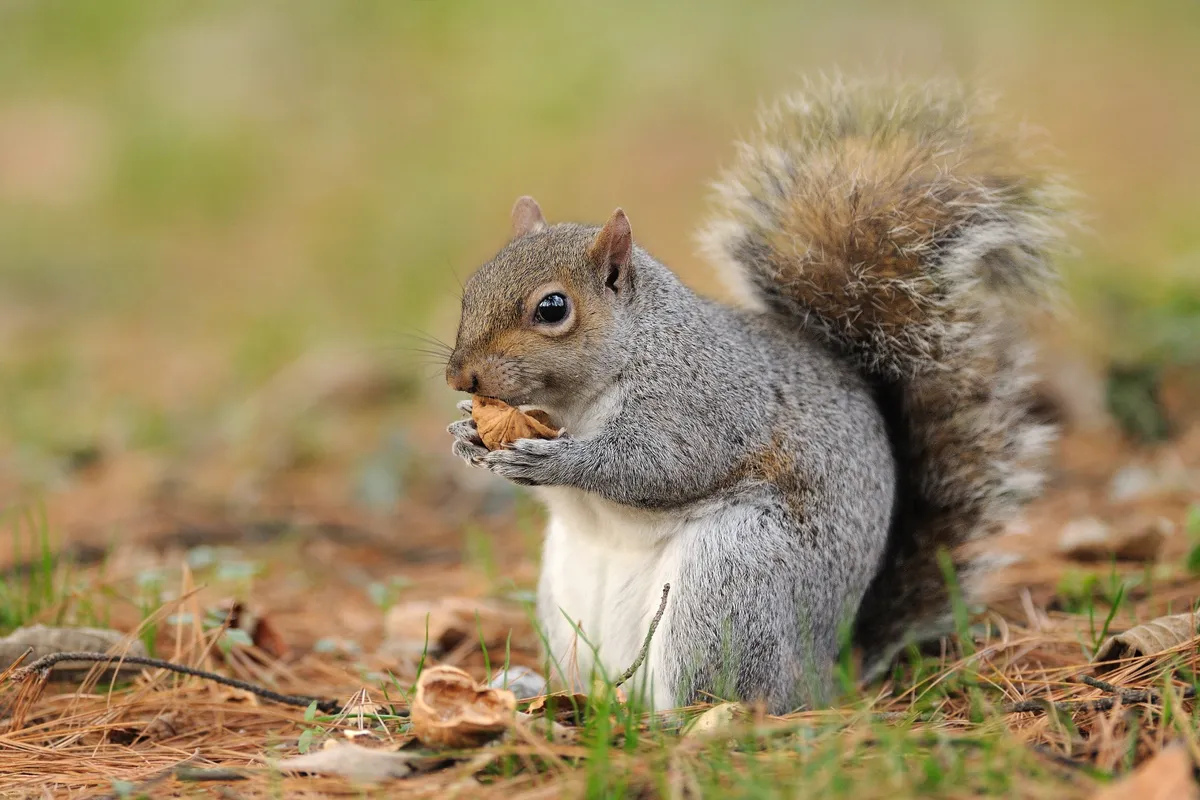
Grey squirrels: do you love them or loathe them? In 2021, a Royal Forestry Society study worked out that these alien acrobats from North America cost an eyewatering £37 million every year in England and Wales alone, in terms of the cost of controlling them and the damage they do to timber, together with the associated loss of carbon storage the lost trees would have provided. That’s before one considers their impact on our native red squirrels. And yet. Grey squirrels probably bring more joy to more people than any other wild mammal in Britain.
In January and February, you’ll often hear what appear to be squirrels sneezing. These nasal, ‘muk muk’ calls are a feature of the grey squirrel breeding season, as are furious chases up, down and around trees as males attempt to catch females. Some females will already have young by the month end, the first of two litters.
Learn more about grey squirrels:
- Red squirrel vs grey squirrel: the key differences
- Grey squirrels guide
- Grey squirrel spread is our fault
Waxwing (Bombycilla garrulus)
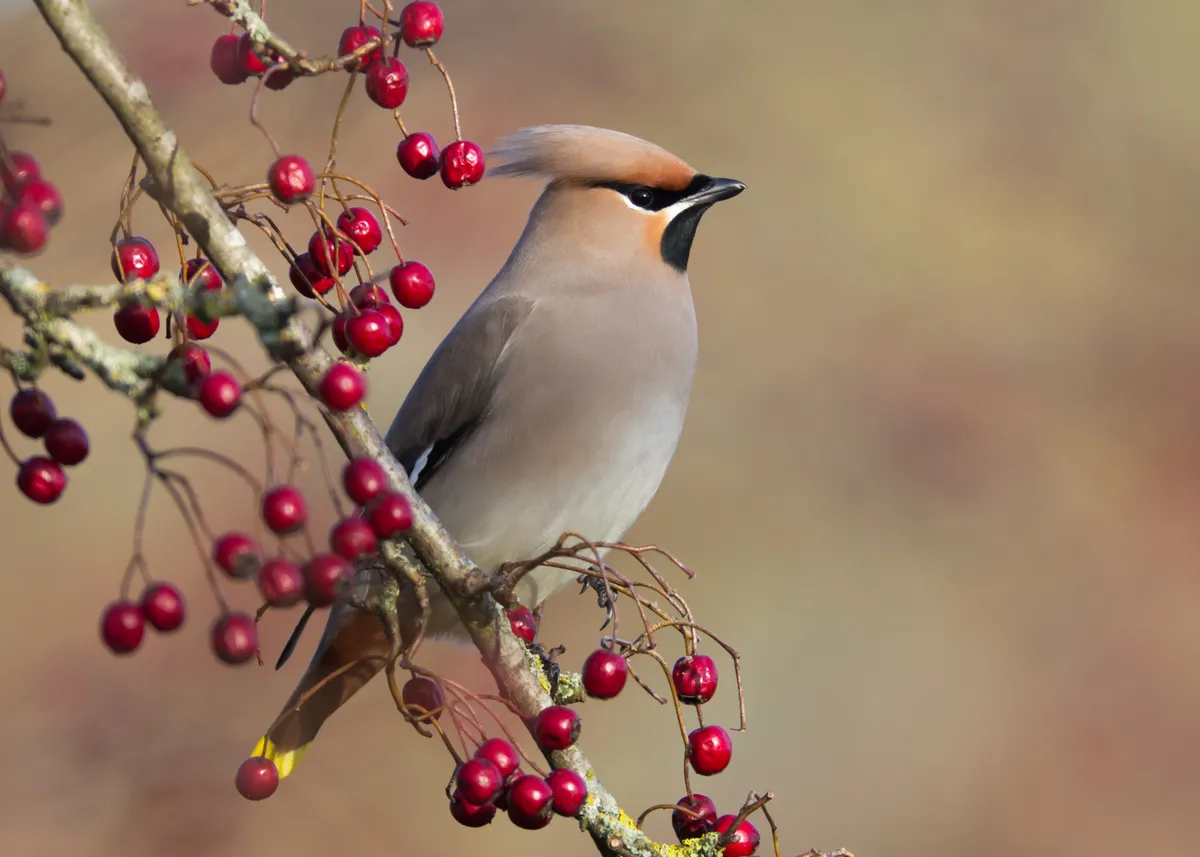
Punk-crested waxwings are among the showiest birds of winter, with dusty pink plumage offset by a neat bandit mask. The name comes from the curious little red blobs on the tips of some of their secondary wing feathers, which resemble the sealing wax of old. No-one knows what function these might have, though they might play a part in courtship. Despite their exotic looks, however, waxwings are most likely to be confused with starlings, which are a similar size and likewise seen in flocks. The similarity is most striking in flight.
Waxwings breed in Scandinavia and Siberia, only reaching the UK in significant numbers when the berry crop fails across their home range. In these so-called ‘invasion’ years, or irruptions, hungry flocks hundreds-strong arrive in northern and eastern counties. During the biggest irruptions, the debonair visitors push south and west through the country as supplies of their favourite mountain ash (rowan) berries are exhausted. Hungry waxwings on the hunt for fruit often turn up in trees beside town-centre car parks or busy roads, excited posts on social media tracking their every move.
Snowdrops (Galanthus nivalis)

’Tis the season to be a galanthophile, otherwise known as a lover of snowdrops. These flowers are native to mainland Europe but have been naturalised in British woods for several centuries. According to Plantlife, they were first recorded in the wild in 1778, though are likely to have been growing here before that.
Snowdrops are adapted to midwinter flowering: a sheath protects their flower stem as it pushes up through the hard, frosty ground. This is a kind of modified leaf, and its botanical name is a spathe. The structure gives snowdrops their alternative name of ‘snow-piercer.’
Compared to other woodland plants flowering this month and next, such as primroses and violets, snowdrops are not particularly valuable for wildlife. They do attract the year’s first queen bumblebees, but rarely buzz with pollinating insects. So they usually spread by bulb division, which sidesteps the need for seeds.
European badger (Meles meles)
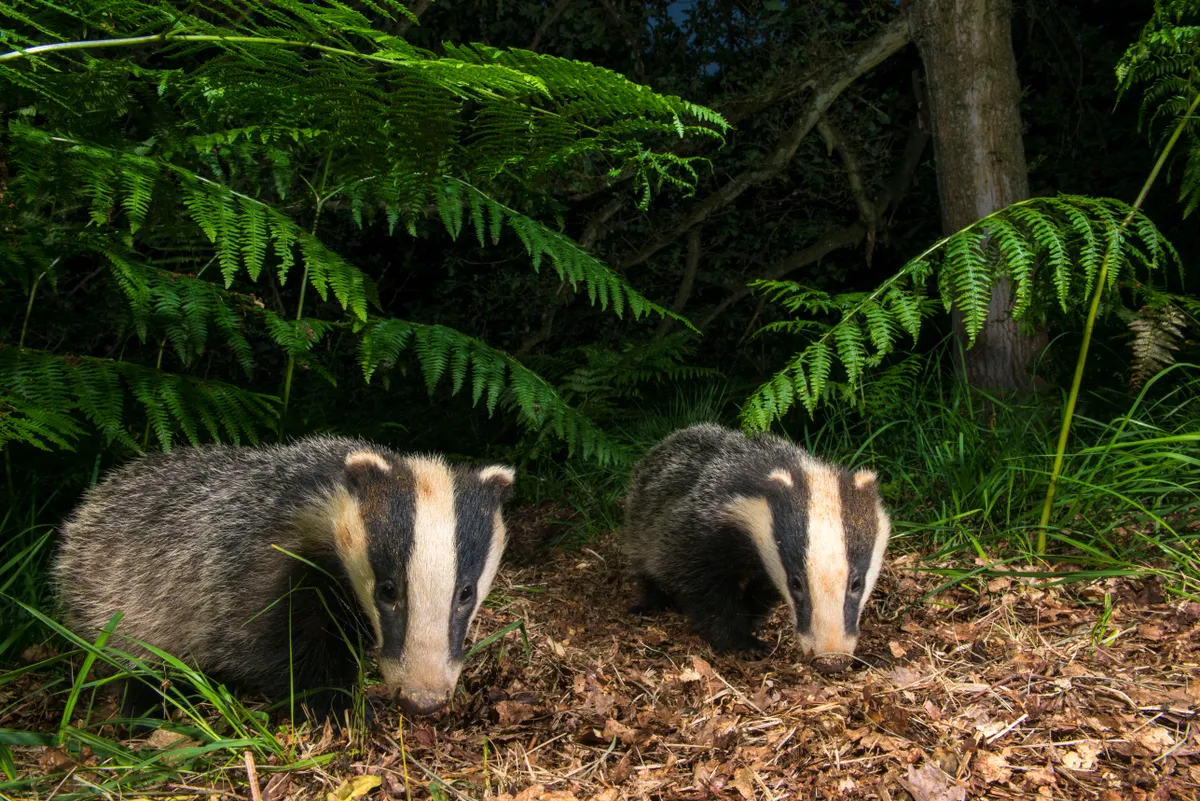
Female badgers, known as sows, birth very early in the year, often in January or February. Though this may sound counterintuitive, it makes sense. Cubs born now will take their first wobbly steps above ground, blinking in the moonlight, in roughly 8-10 weeks’ time – during the full flush of spring.
Earthworms, insects and a plethora of plant foods will be easy to find. These cubs will have the longest possible run-up to the autumn, when they must fatten up enough to tide them over the coming winter.
It’s not the case, however, that a badger clan is one big happy family, cooing over the tiny, blind, wispily furred babies in its midst (cubs don’t open their eyes until five weeks old). If the new mother is low-ranking, she may lose her litter in an outbreak of interclan violence.
The helpless young are most at risk from the sett’s dominant, highest-ranking sow: infanticide removes the threat of rivals to her own offspring. The cubs might also be killed by an adult male, if he’s not sure of their paternity.
The European badgers's scientific name, Meles meles, is an example of a tautonym, where the genus and specific name are the same.
Goat willow (Salix caprea)

The goat willow, pussy willow or great sallow is a tree that delivers in every season. In spring and summer, it is perhaps best-known as a food-plant for caterpillars of the majestic purple emperor butterfly. But for now, in late winter, it gives a much-needed boost to the first emerging insects.
So much so, a flowering goat willow on a fine February day is often audibly alive, as it hums like static electricity – the sound of grateful swarms of hoverflies, flies, bumblebees and solitary bees feeding among its branches.
Goat willow is dioecious (male and female flowers grow on separate trees) and blooms before it is even in leaf. The flowers are furry catkins – grey on male trees, later turning yellow with the heavy load of pollen; greenish on female trees. Both are popular with insects. After dark, the catkins continue to lure pollinators, this time moths such as the clouded drab and Hebrew character.
European robin (Erithacus rubecula)

Most robins see out only one winter, or perhaps two, so the familiar robins in your garden are a frequently changing cast. Unusually for garden birds, they defend a feeding territory all winter. Some will simply stay put after breeding. Others, especially females, migrate to find their winter territory, either locally within the British Isles or further afield.
Great grey shrike (Lanius excubitor)
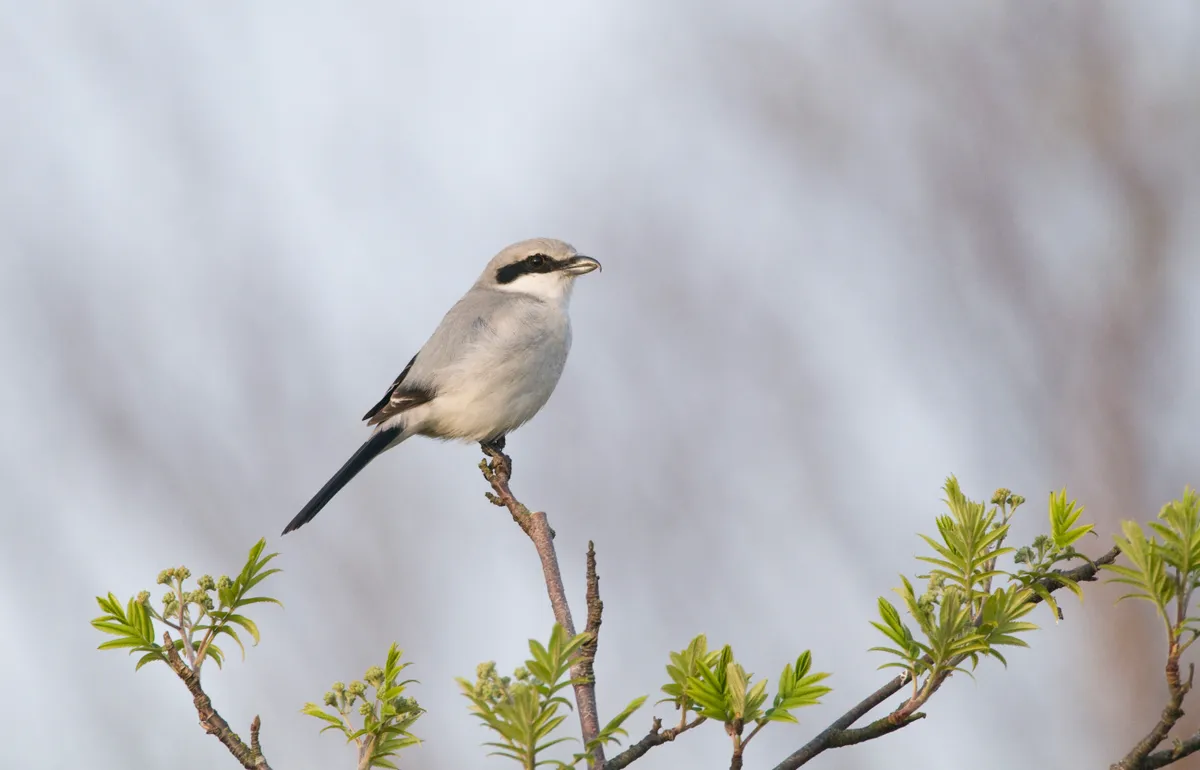
Fewer than 100 great grey shrikes visit Britain from Scandinavia each winter. The rarity of these pocket predators only adds to their allure. They also haunt some pretty bleak and evocative places: wind-blasted commons, heaths and areas of clear-fell in conifer plantations, where their pale plumage and fondness of perching on the topmost twigs of small trees makes them stand out.
Great grey shrikes are surprisingly capable hunters – their raptorial bill is able to despatch and tear into rodents and small birds such as finches and pipits. From their elevated perch, they scan the open ground around them patiently, waiting for the chance to strike. But after a kill, they won’t always feed straight away. Like other shrikes, these smart birds have the gruesome habit of impaling dead prey on the thorns of gorse bushes or hawthorn trees to eat later.
Stinking hellebore (Helleborus foetidus)

Stinking hellebore: What a name! You can see why horticulturalists often prefer ‘winter rose’. The ‘stinking’ epithet references the fact that the crushed leaves smell unpleasantly meaty to some people.
While many other hellebore varieties are grown in gardens, this one happens to be wholly native. You can find it growing wild in woods, mainly in limestone areas in the southern half of Britain, although it’s hard to tell these from garden escapes.
Stinking hellebore has unusual greenish flowers, but neither those nor the leaves’ smell is the most interesting thing about this plant. It actually deploys heat to attract pollinators.
The secret was discovered only 10 years ago, and the warmth is generated by another organism entirely, a yeast that lives in the hellebore nectar. Floral warming, as it is known, may be a way of offering an extra reward, as well as nectar, to visiting pollinators in cool conditions.
Fieldfare (Turdus pilaris)
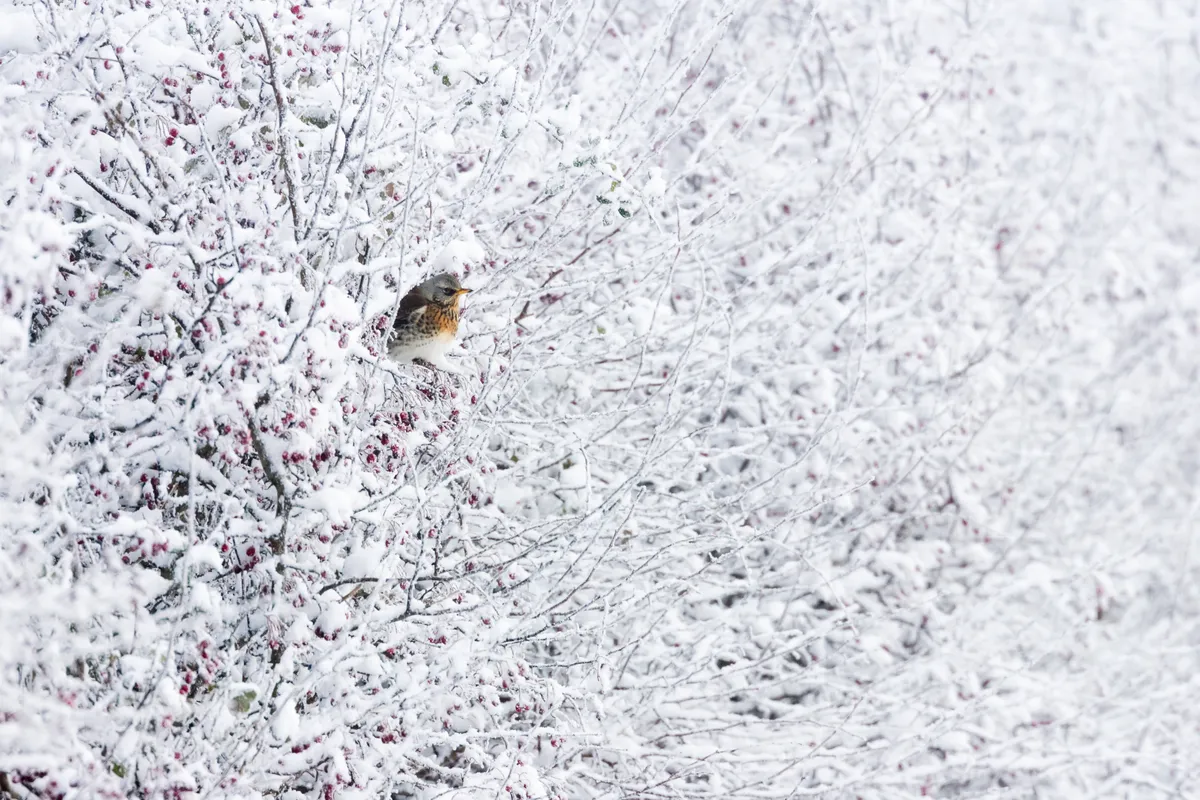
Each winter, fieldfares descend on Britain and Ireland from northern and eastern Europe to scour the countryside for earthworms and berries. The nomadic thrushes make “military-style gleanings of fields... all moving the same way,” notes Nicola Chester in her book On Gallows Down. Research by the BTO found that thrush flocks indicate a field has plentiful earthworms and thus good soil health.
Rook (Corvus frugilegus)
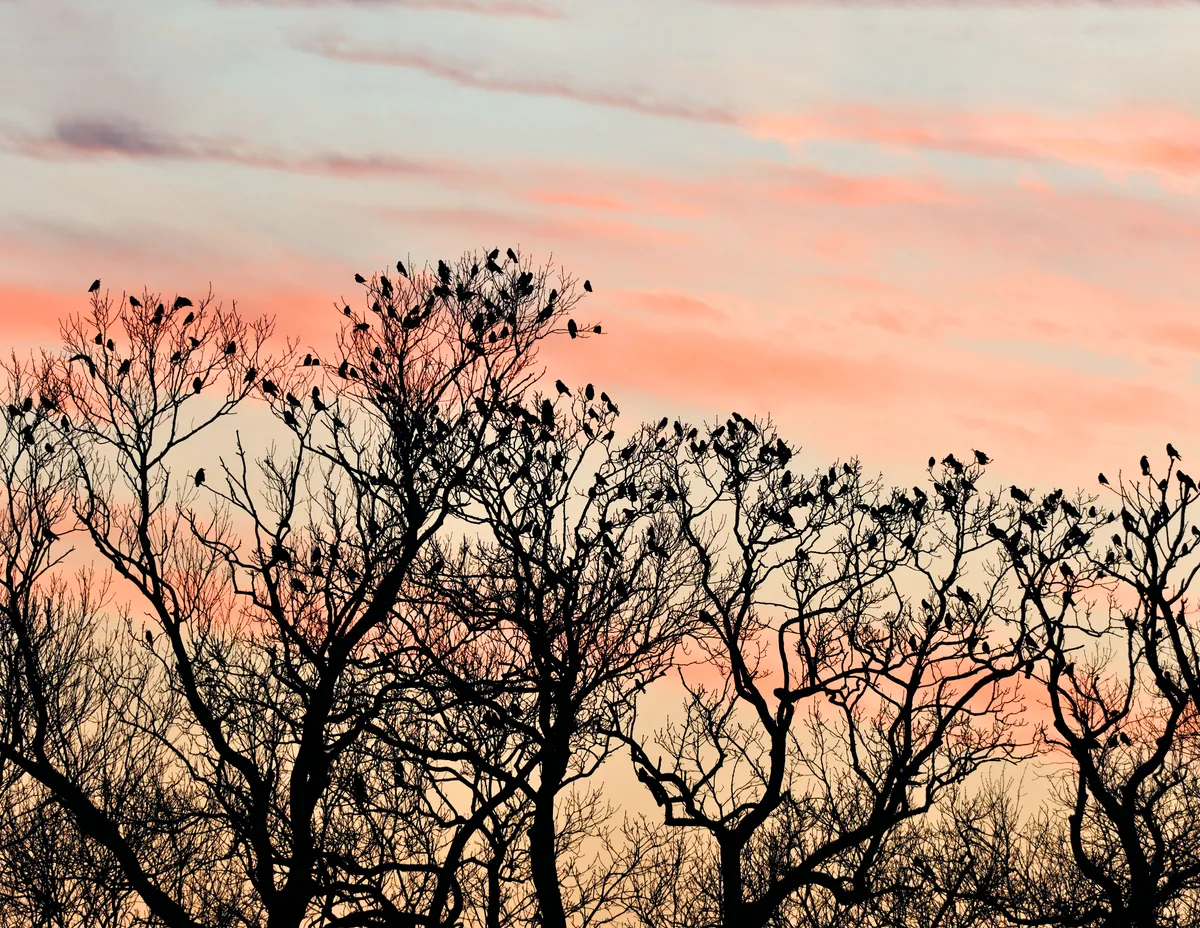
Long before winter is out, new life stirs in still-bare treetops. Come February, mistle thrushes are whistling their mournful, far-carrying song over and over from the loftiest twigs, great spotted woodpeckers are drumming on resonant dead wood to announce their territory and, safe in their dreys, female grey squirrels are nursing their first young of the year.
Rooks, too, begin breeding remarkably early. Their rookeries in the crowns of tall oak and ash (once, elm was the tree of choice) are already a hive of activity in February, as established pairs bring sticks to patch up their tatty nests or try to pinch them from neighbours. Rooks mate for life – rare among British birds, but the norm among our corvids – and devoted partners will sit beside their nest to groom one another affectionately. Known for their social intelligence, they are able to recognise individual birds in their colony.
We can’t manage that, but it is possible to tell rooks from carrion crows, even at long range, by the former’s freer wing beats and longer ‘fingers’ at the wingtips. On the ground, identification becomes much easier – a rook looks rather tousled, with a rakish forehead and feathering on the legs that gives the impression of baggy shorts. The bare grey skin around the pointed bill is also unmistakable.
Learn more about corvids and roosting birds:
Alexanders (Smyrnium olusatrum)

The exuberance of spring may be weeks away, but road verges and path sides are starting to green up. Look for jagged nettle shoots, spears of emerging bluebells and heart-shaped leaves of lesser celandine. Another well-advanced plant this month is Alexanders, a relative of cow parsley brought here by the Romans, which flourishes by the coast in Ireland and southern Britain.
Its glossy leaves are grouped in threes and, like the juicy stems, sought after by foragers. Yellow-green flowers (pictured) appear from April, though you might notice some in bud already.
Roe deer (Capreolus capreolus)
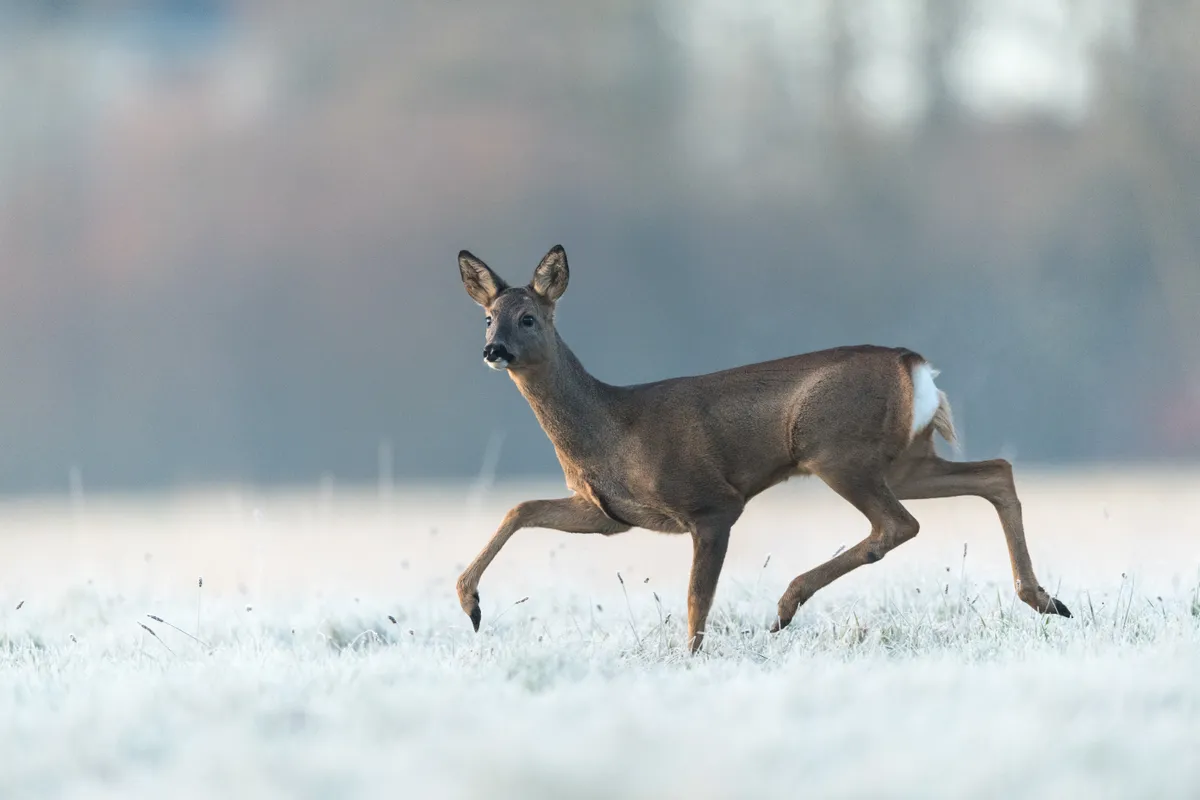
Unlike their red and fallow cousins, roe deer do not gather in large herds. They are usually seen alone or, particularly at this time year, in small groups of up to half a dozen or so. You’ll often see them feeding in the open at the edges of fields and woods in the low light of early morning and evening.
With Britain’s roe population at a record high – probably more than 250,000 strong and still increasing – the odds are that any train or motorway journey should reveal a few. In February and March, they are still in grey winter coats and bucks are busy regrowing antlers.
The roe deer's scientific name, Capreolus capreolus, is an example of a tautonym, where the genus and specific name are the same.
Barn owl (Tyto alba)
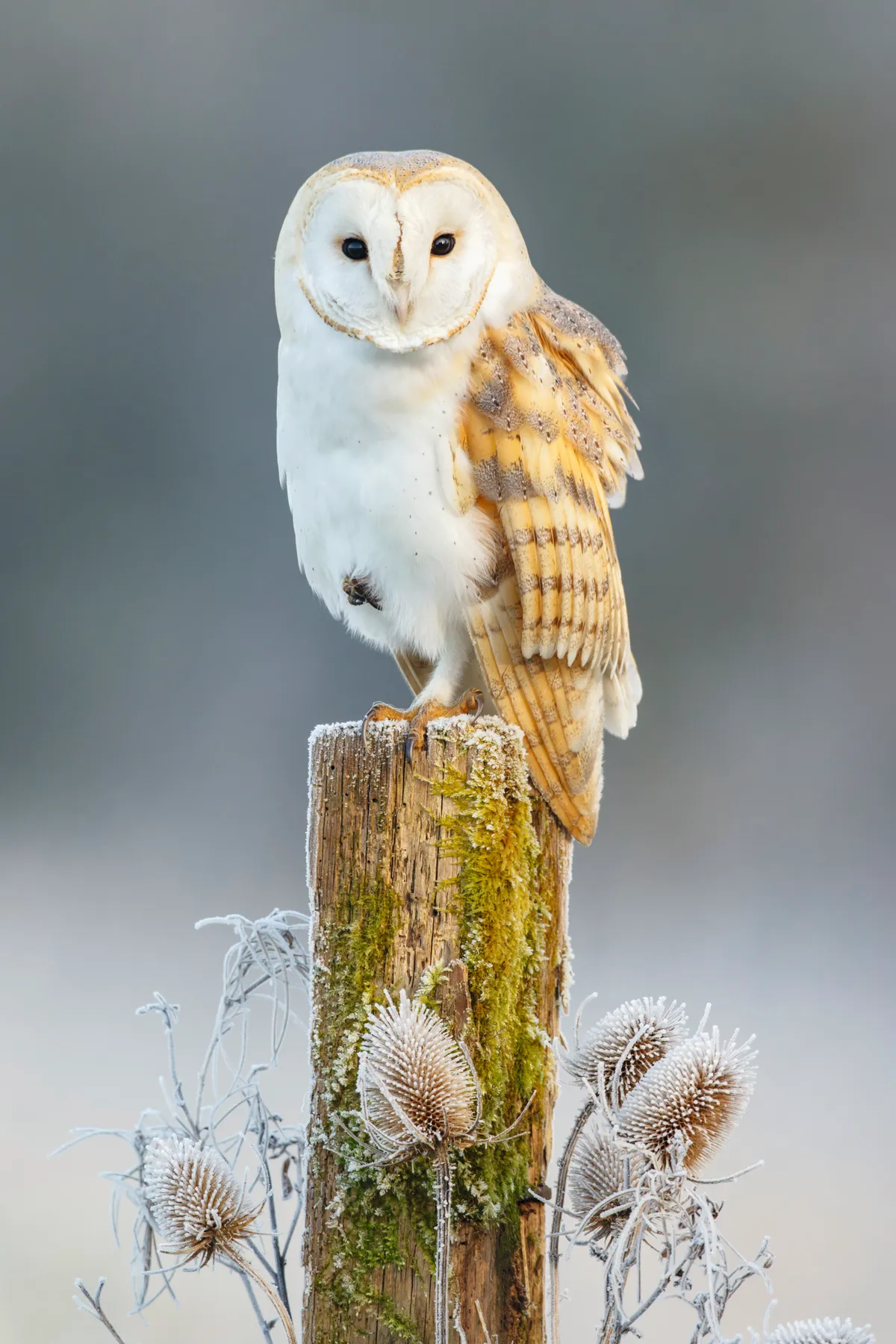
Barns owls appear to float through the air as they quarter rough grassland in search of voles. They fly in a sweet spot, roughly 2–3m above the ground, folding their long wings to drop like a stone the instant they hear the rustle of prey.
Barn owl survival is closely tied to vole numbers and the weather – freezing conditions and flooding make hunting difficult. February 2020 was Britain’s rainiest on record, and there is growing concern that any shift towards wetter winters, coming on top of other pressures, could have a severe impact on these quicksilver birds.
Learn more about owls:
Nuthatch (Sitta europaea)
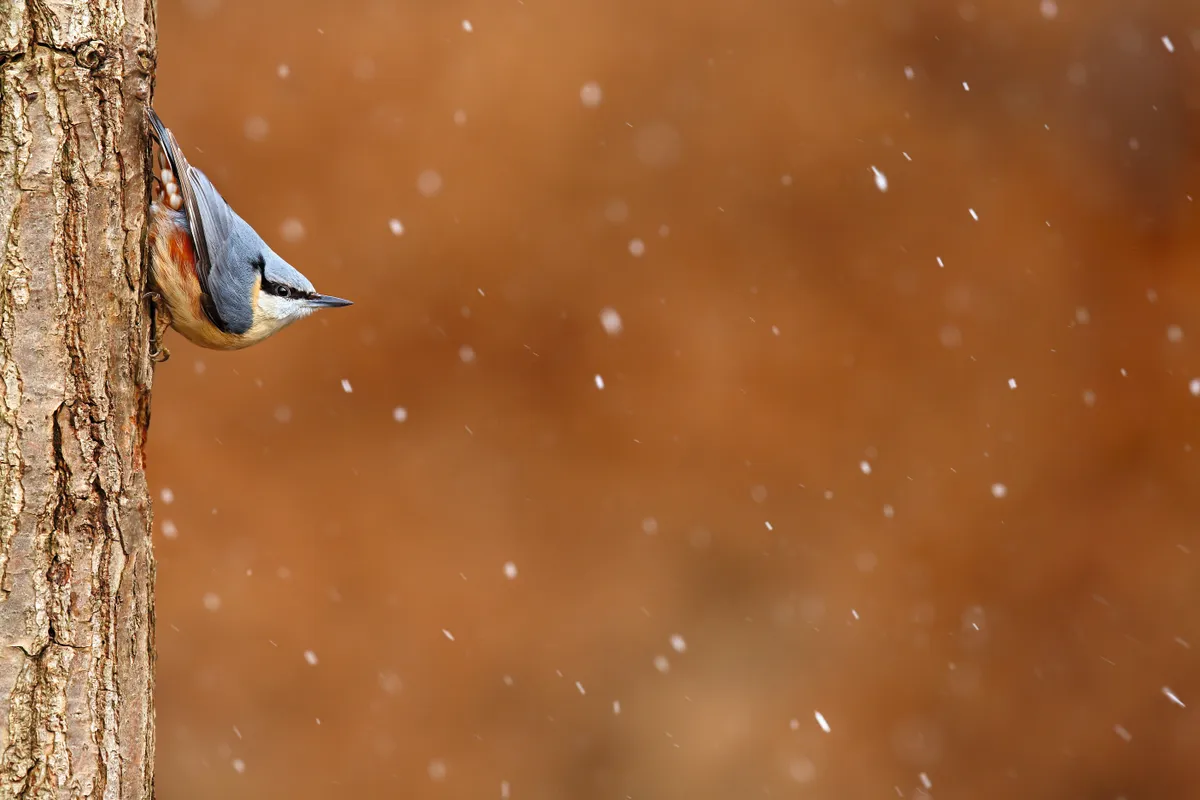
This boisterous bird is a delight at garden birdfeeders, and comes second only to the house sparrow and greenfinch in the pecking order. While sunflower hearts can be swallowed in one, the nuthatch’s signature winter feeding technique is to wedge acorns and hazelnuts into cracks in tree bark before hammering them to pieces, hence the species’ old names of ‘nut hack’ and ‘nut jobber’. With such heavy use, its bill becomes shorter as the season progresses. Formerly absent from Scotland, the nuthatch has recently colonised the southern half of the country.
Learn more about nuthatches and attracting garden birds:
Elder (Sambucus nigra)
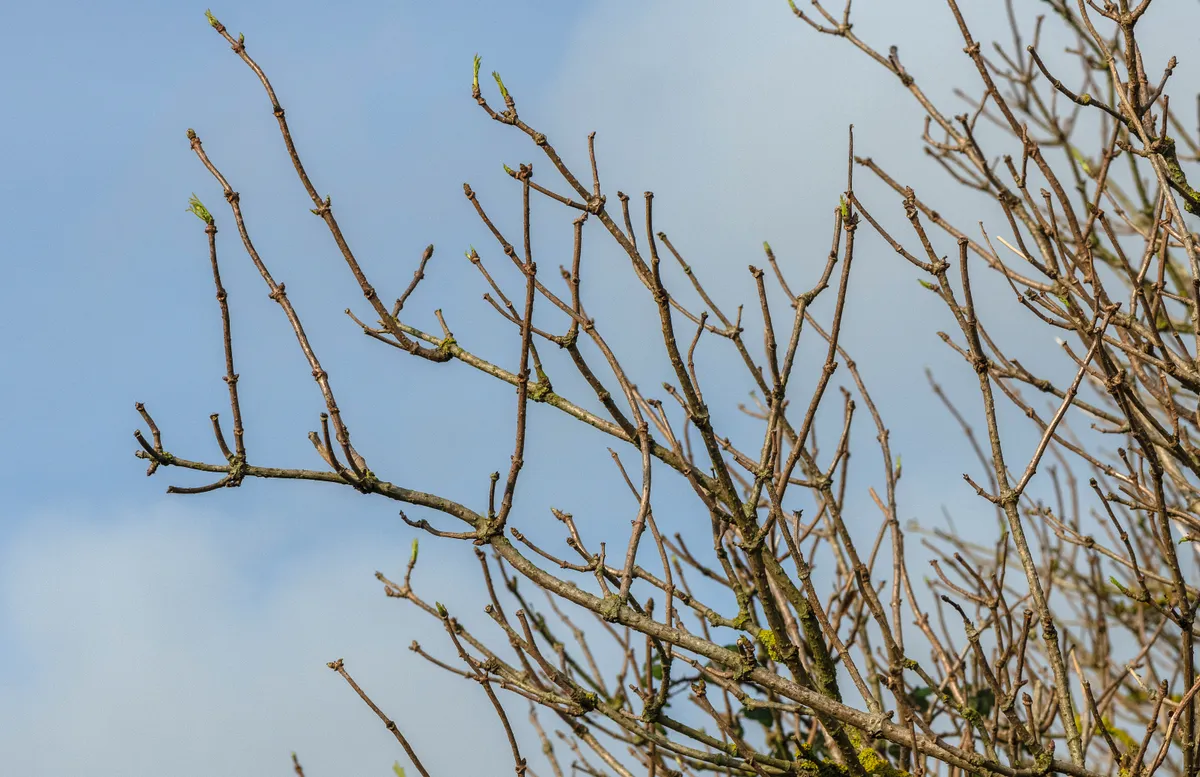
All winter deciduous trees are covered in buds, just biding their time, and (with practice) you can use them to tell species apart. One of the first to burst into leaf is the elder, a common shrub-like tree of hedgerows and scrubby woodland. Its reddish-purple buds, which sit in pairs on opposite sides of the twig, split to reveal ferny leaves with saw-toothed edges. Elder bud burst is one of many seasonal events recorded every year by participants in the Woodland Trust’s long-running Nature’s Calendar project.
Foraging recipes using elder:
Common frog (Rana temporaria)
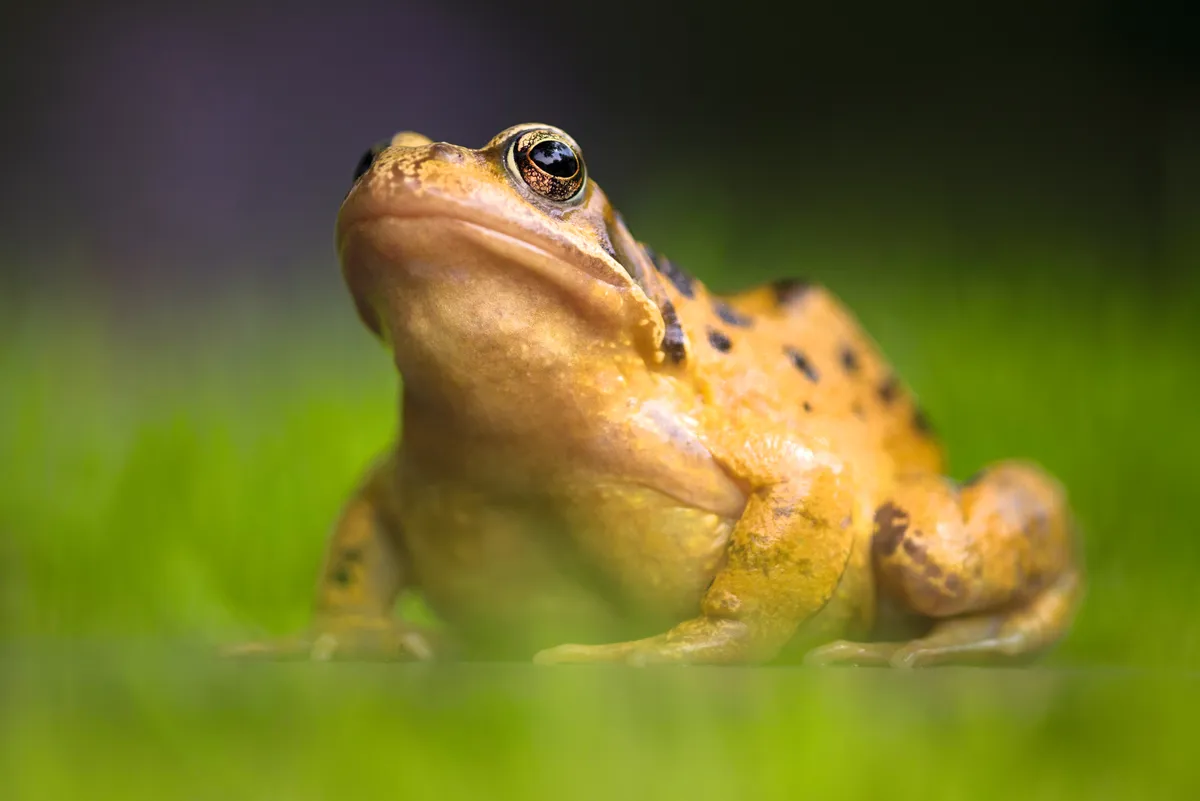
Amphibians such as the common frog rely on temperature as the cue to wake up from hibernation and start breeding. Warm spells can thus result in frogspawn as early as Christmas, and this has always been the case – though, with milder winters, such instances are on the rise.
Early frogspawn is most likely in south-west England, from where sightings rapidly spread east and north throughout February and March. A 2009 study found that for every 1°C rise in temperature, the average spawning date moves forwards by 5.1 days. Spot spawn in the sunniest part of the pond.
Beech tree (Fagus sylvatica)

Beautifully pale and smooth, the bark of young and middle-aged beech trees has long attracted anyone wanting to inscribe the initials of their Valentine. Scarring is not great for the trees, albeit seldom fatal. But as the bark ages, it is less suitable for romantic graffiti, developing myriad cracks, lumps and bumps – pollarded specimens, in particular, become wonderfully gnarly. Beech is not a very long-lived tree, however. Any individuals that reach 250 years may be considered veterans, and relatively few live into their third century.
Stock dove (Columba oenas)
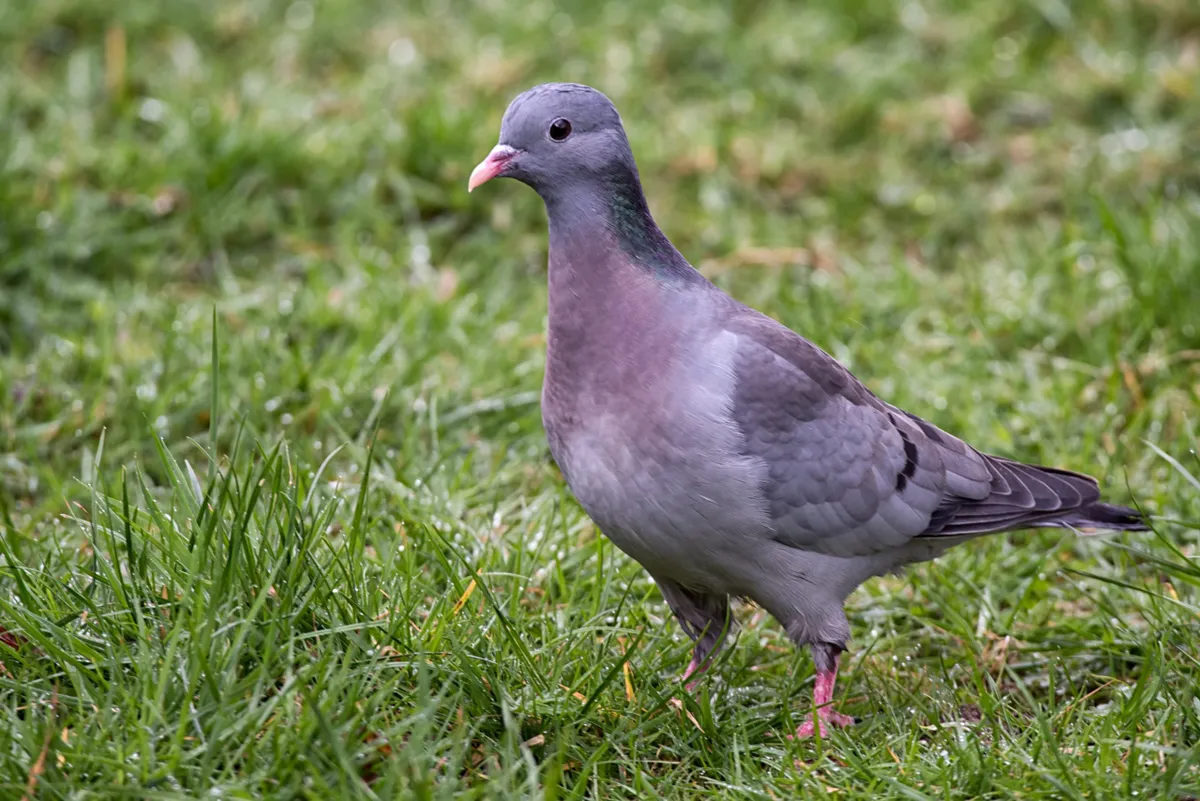
When was the last occasion you spent any time watching pigeons? The stock dove is one of those species that hides in plain sight, largely because we so often mistake it for its larger and more familiar relative, the woodpigeon. However, if you pause awhile to scan pigeon flocks in winter fields, you should discover that it is rather more common than you thought. The stock dove is a prettier, neater-looking bird, with two black wing bars and button-like black eyes that give it an 'innocent' appearance.
Small tortoiseshell butterfly (Aglais urticae)
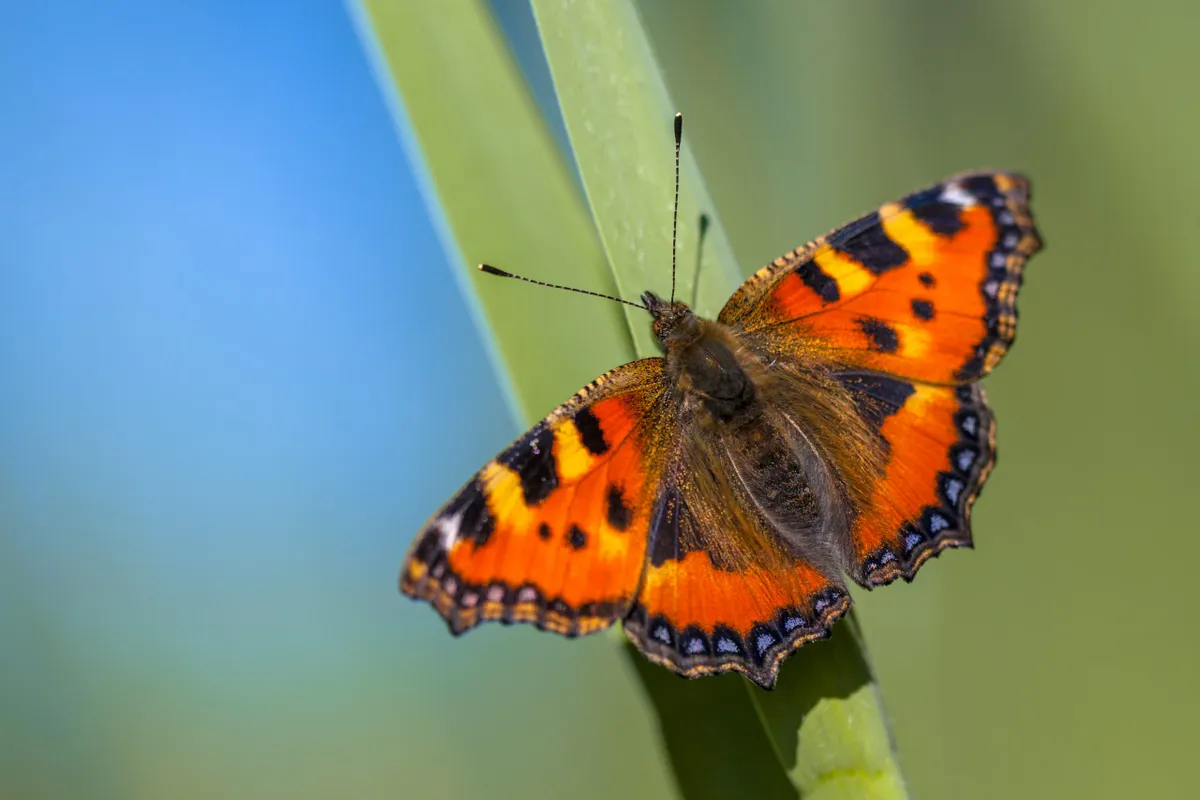
Small tortoiseshells have evolved to hibernate in cool, dry places with a stable climate, so unheated rooms and shed are perfect. Like overwintering red admiral and peacock butterflies, they're liable to be disturbed by any of us moving aorund, radiators coming on, or midwinter sunshine through a window. It can be upsetting to see them flutter helplessly, but gently catch and re-locate them and they will cool down again. Every small tortoiseshell is precious, since the species' population declined by 78% between 1976 and 2018, though last summer was their best since 2014.
Learn more about butterflies:
Wood mouse (Apodemus sylvaticus)
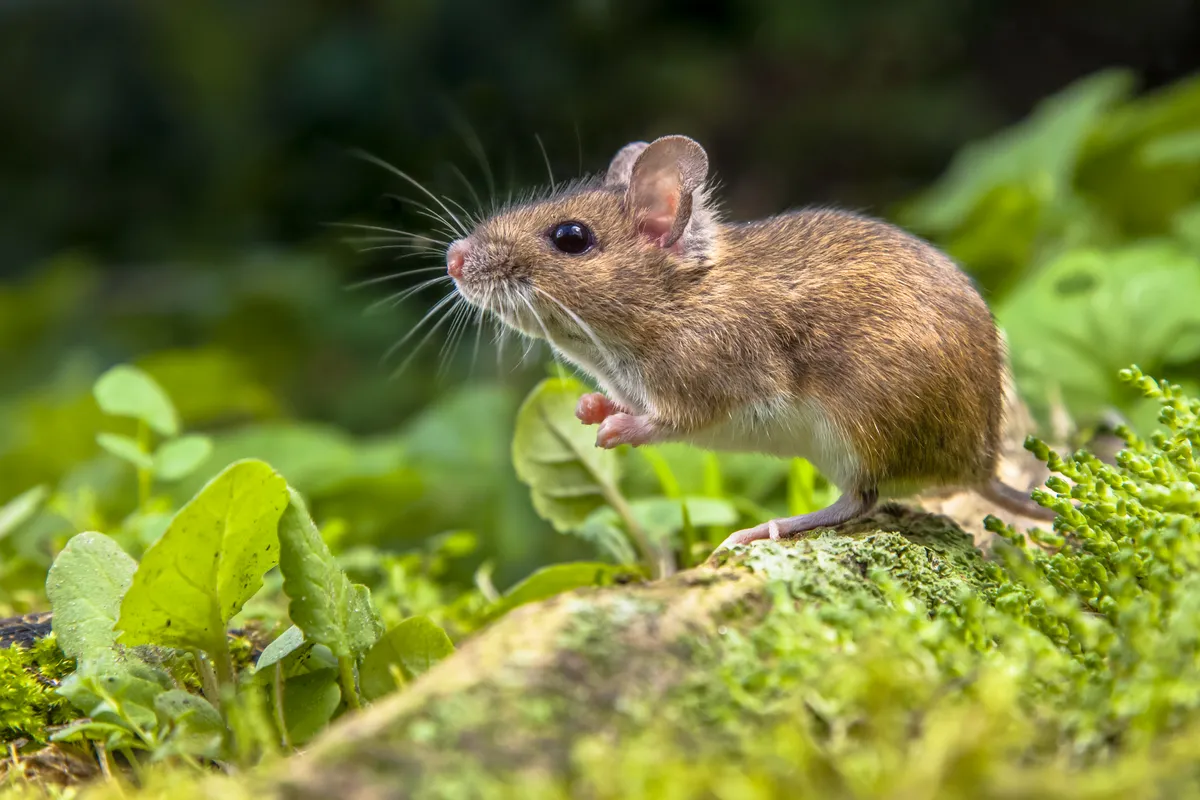
Wood mice remain active all winter, relying in part on caches of food laid down in autumn. Don't be fooled by the name. Apart from on a few Scottish islands and mountains, you can encounter these endearing nocturnal rodents, also known as field mice, just about anywhere. They're more than happy to share our homes, so just because the mouse is indoors, that does not make it a house mouse. The best way to tell the species apart is by the ears, which are much larger than wood mice.
Learn more about rodents in the UK:
Weasel (Mustela nivalis)

‘Live fast, die young’ could be the weasel’s motto. Of the seven mustelids found in Britain, it has the shortest lifespan – rarely over 12–18 months. Small size and an energetic hunting style mean it rapidly burns through energy reserves, and consumes about a third of its body weight every day in order to survive.
The weasel is also one of the fastest breeders in the mustelid family, and in years with plenty of voles (a key prey item) youngsters born in spring will breed in summer. Last summer’s males will start looking for mates in February and March.
Learn more about weasels and mustelids:
Hazel catkins (Corylus avellana)
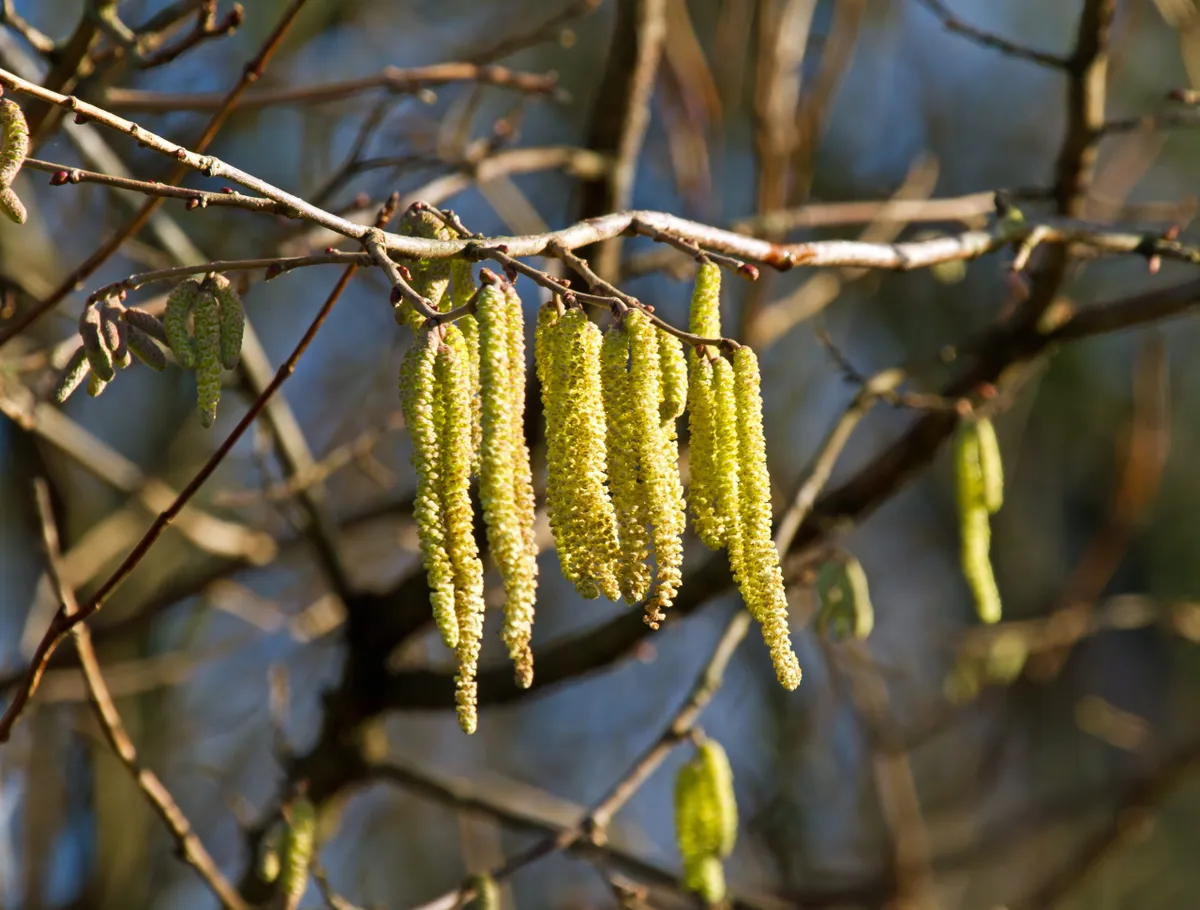
Hazel catkins were once known as lamb's tails. partly for the obvious resemblance but also perhaps because both are welcome signs of the coming spring. Dangling from bare twigs, these pendulous flowers spikes-botanists would call them inflorescences-are covered in hard, golden scales and are entirely male.
They are among the first flowers of the year to appear on any native British tree. Hazel also produces female flowers, but you need to hunt for them as they're minuscule by comparison-tiny red tufts strangely reminiscent of sea anemones.
Great spotted woodpecker (Dendrocopos major)

One of the first bird sounds to hint at the approach of spring isn’t a song or call, but the territorial tapping of great spotted woodpeckers. Their dagger-like bill makes contact up to 16 times a second. Both sexes drum, though paired males are most active. Handsome in pied plumage, drumming woodpeckers stand out among the leafless treetops. As Horatio Clare describes in The Light in the Dark, when one shifts position, you suddenly get an eyeful of “scarlet undertail coverts like flashy boxer shorts.”
Learn more about woodpeckers:
Little auk (Alle alle)
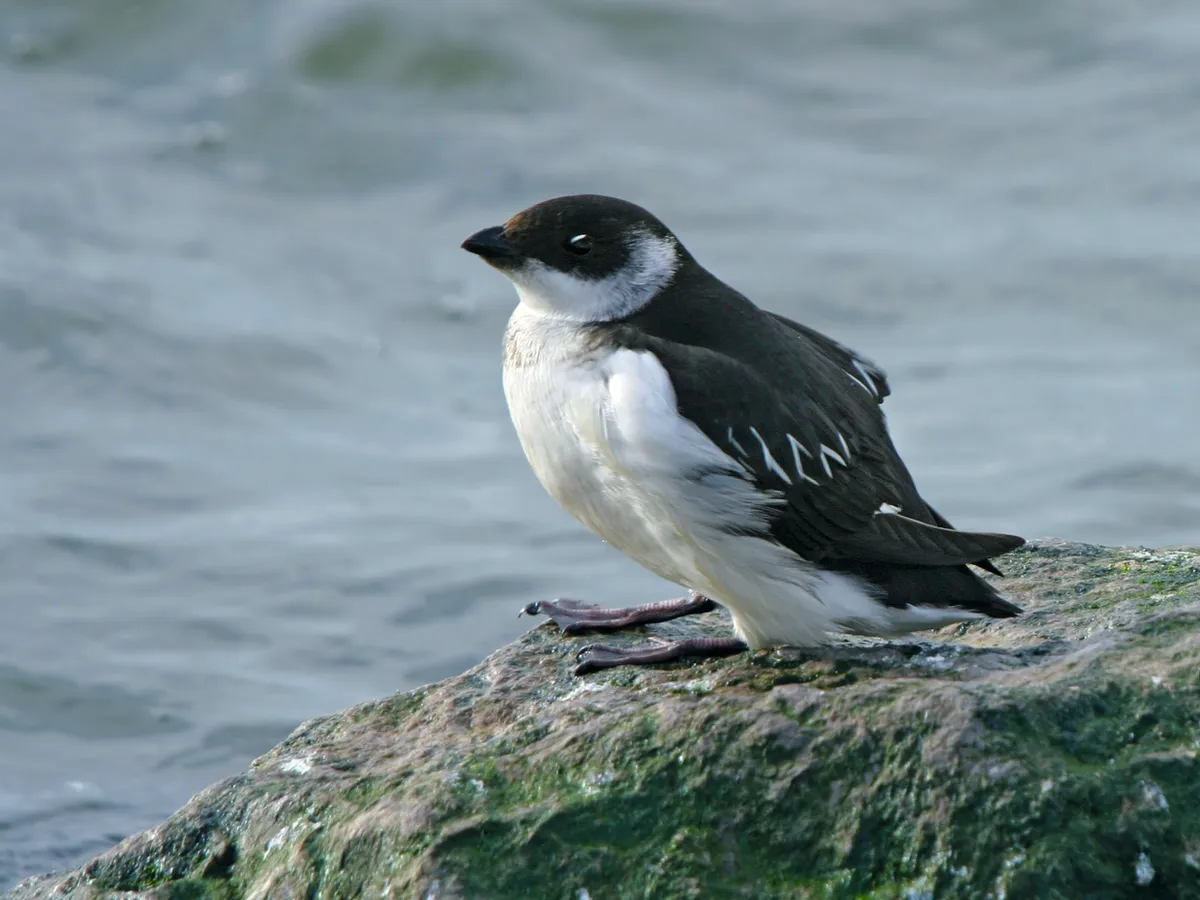
When people meet their first puffin, they often comment how much smaller it is than expected. The little auk is a third smaller still. This plankton eating seabird does not normally visit British or Irish waters, as it's a creature fo the High Arctic, breeding on vast cliffs in places such as Svalbard, sometimes in colonies a millions strong. During winter gales, exhausted birds end up 'wrecked' far to the south. After the worst storms, hundreds of these very tame, starling-sized auks may be seen close inshore, mainly in Scotland and along England's east coast.
The little auk's scientific name, Alle alle, is an example of a tautonym, where the genus and specific name are the same.
Mallard (Anas platyrhynchos)
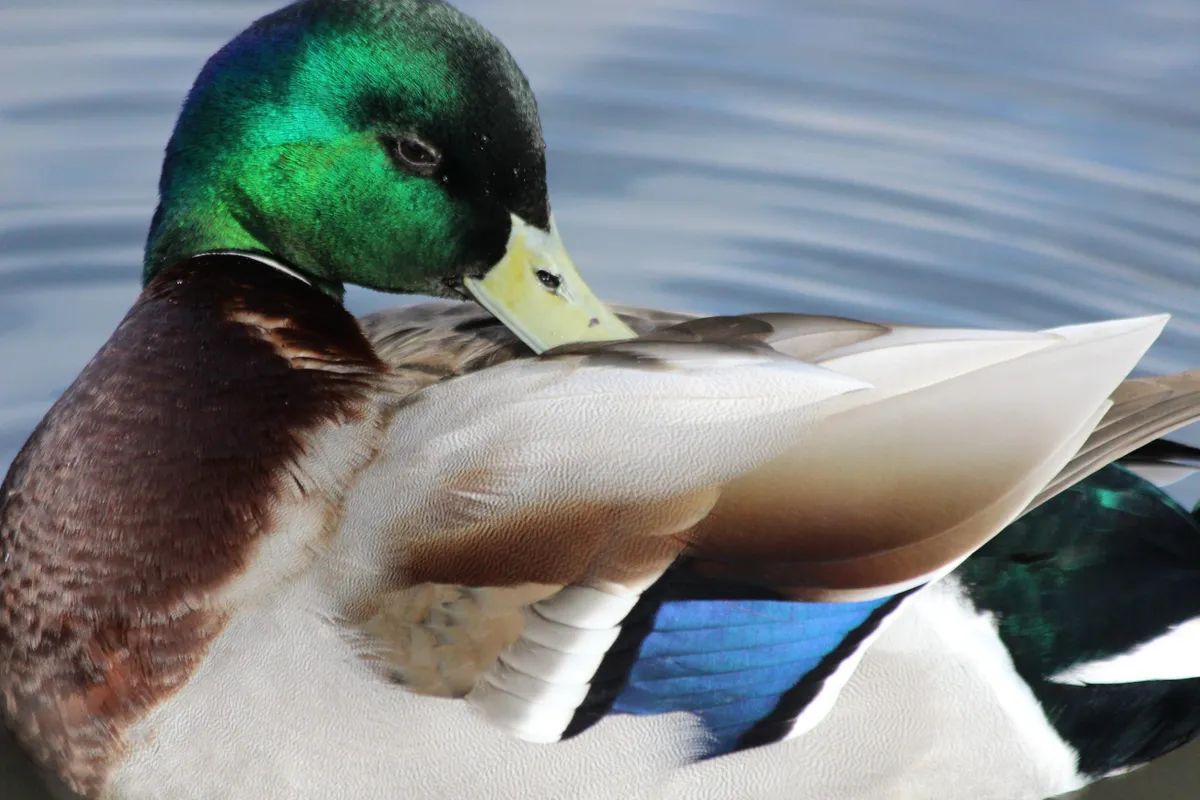
This month, park-lanes ad other wetlands can feel like cheesy discos, full of head-flicking, rump-waggling, whistling, cooing and bling. Male ducks are in prime condition and busy courting. Drake mallards display in groups, frequently pumping their heads up and down, or rising up out of the water. There's a lot of splashing and energetic chases, as rival jostle to be the one swimming beside a female. Mallards are thriving in the UK: a major new report on our bird populations shows that breeding numbers have almost trebled since 1970.
Peacock butterfly (Aglais io)

Look out for peacock butterflies in the dark corners of sheds, garages, lofts and unheated spare rooms. Even when torpid, a resting peacock has the amazing ability to flick its wings open, flashing its fake ‘eyes’ to startle would-be attackers. Only a few British butterflies survive winter as adults – most species sit it out as eggs, caterpillars or pupae.
Main image: Nuthatch in classic pose during a snow storm in Yorkshire, UK. © Simon Roy
